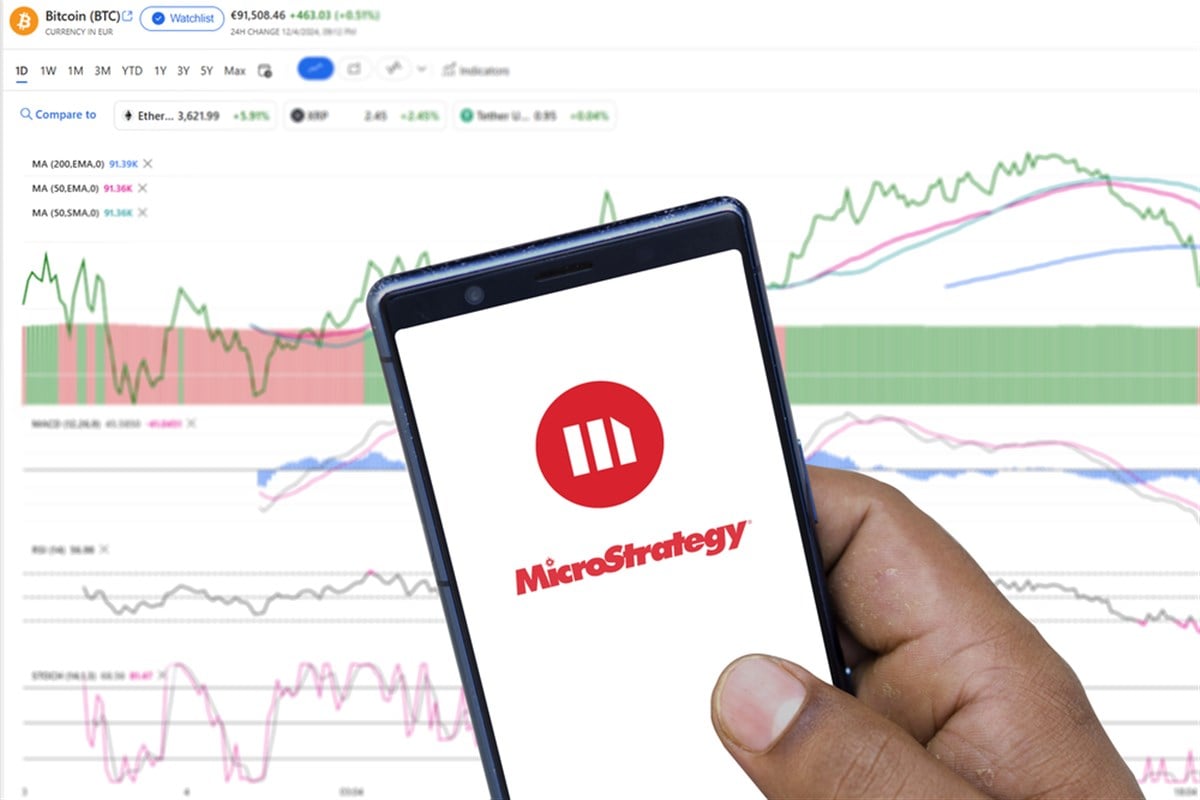 MicroStrategy (NASDAQ: MSTR), now doing business as Strategy, is a leading player in crypto markets and recently announced an intriguing security issuance: preferred stock. Below, I’ll describe in detail exactly how this type of stock works. I’ll provide insight into important considerations when thinking about a potential investment. All yield and return figures use prices as of the Feb. 12 close.
MicroStrategy (NASDAQ: MSTR), now doing business as Strategy, is a leading player in crypto markets and recently announced an intriguing security issuance: preferred stock. Below, I’ll describe in detail exactly how this type of stock works. I’ll provide insight into important considerations when thinking about a potential investment. All yield and return figures use prices as of the Feb. 12 close.
Dividend Dynamics: Understanding STKR’s 8% Dividend
On Jan. 31, Strategy announced the offering of 8.00% Series A Perpetual Strike Preferred Stock, trading under the ticker symbol STRK. The first thing to understand is that the security will pay an 8% dividend based on a price of $100 per share. However, the opening price of the security was $80 per share. So, initial purchasers, when it was worth $80, will receive $8 in dividends per year, resulting in a 10% yield. An increase in the price of the preferred shares will push the yield down, and a drop in price will push the yield up. As of the Feb. 12 close, it is trading at $90, making the yield 8.9%.
The preferred shares have no maturity; investors could receive dividends indefinitely. However, the tech company is not required to pay dividends each quarter. Any unpaid dividends accumulate, and the company must eventually pay them. The company could theoretically delay paying out these dividends as long as it wants. Although, this is unlikely. It would hurt investor confidence and, thus, the common share price. The company can also choose to pay dividends through shares of common stock rather than cash.
STRK’s Place in the Capital Structure: Between Debt and Common
The next important thing to understand is the preferred stock’s place in Strategy’s capital structure. Capital structure refers to the order in which companies must pay out interest and dividends to debt and equity holders. It also has implications around who gets money in the event of bankruptcy. Bondholders are at the top of the capital structure. This means companies must pay all interest payments on bonds before preferred or common shareholders receive any dividends.
After the company pays bondholders, it can use the remaining funds to pay dividends to preferred shareholders. Only then can the company pay dividends to common shareholders. If Strategy goes bankrupt, it must pay debtholders first. Then, if there are any funds left, it will pay preferred shareholders $100 per share plus any unpaid dividends.
Convertibility and Price Movement
Another important point is the convertible feature of the stock. Preferred shareholders can swap a preferred share for one-tenth of a common share. Thus, for it to be profitable to convert the shares, the common stock would need to be trading ten times higher than the preferred. Based on the $90 price, Strategy shares would need to trade at $900 for conversion to make sense. That is around 175% higher than the common stock’s price.
The conversion feature also means the preferred stock’s price will change as Strategy’s common stock price changes. However, it will move up or down much slower. When common stock prices rise, investors are more likely to use the convertible feature.
This raises the value of preferred shares. But, if common shares fall, the opposite happens. Lastly, it is important to know that the preferred shares do not have voting rights.
Overall, it is impossible to go over every intricacy of this offering in just a few paragraphs. The 139-page preliminary prospectus is on Strategy’s investor relations page and is vital to review in detail.
Considerations: It All Comes Back to Bitcoin
Overall, the company has $6.2 billion in debt and nearly $600 million in preferred stock. With its Bitcoin (BTC) holdings worth over $46 billion as of its last earnings report, it has a strong ability to make good on these obligations. However, as with anything related to Strategy, it ultimately comes down to where Bitcoin goes. If its price drops dramatically, so would the company’s ability to pay back debt and preferred equity holders. I should also note that if Strategy tries to sell a lot of Bitcoin in a short period to pay its obligations, it could put significant downward pressure on Bitcoin’s price.
Still, the nearly 9% yield is very high. It is significantly above many preferred equity ETFs that are closer to 6%. Additionally, it is a way to indirectly wager on the price of Bitcoin due to Strategy's common stock correlation with the crypto. Understanding the company’s holistic strategy remains vital to assessing the merits of this security.
Where Should You Invest $1,000 Right Now?
Before you make your next trade, you'll want to hear this.
MarketBeat keeps track of Wall Street's top-rated and best performing research analysts and the stocks they recommend to their clients on a daily basis.
Our team has identified the five stocks that top analysts are quietly whispering to their clients to buy now before the broader market catches on... and none of the big name stocks were on the list.
They believe these five stocks are the five best companies for investors to buy now...







